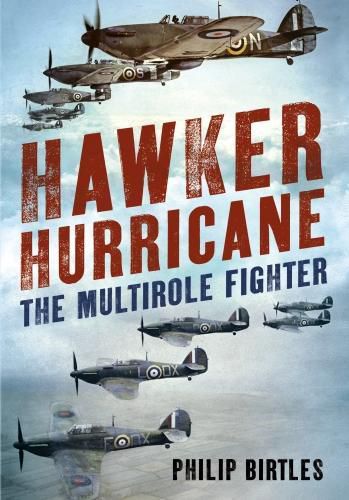Readings Newsletter
Become a Readings Member to make your shopping experience even easier.
Sign in or sign up for free!
You’re not far away from qualifying for FREE standard shipping within Australia
You’ve qualified for FREE standard shipping within Australia
The cart is loading…






This book covers the design, development, production and operations of the Hawker Hurricane before, during and after the Second World War. Without the courage and perseverance of the young men from Britain and the Commonwealth, who risked their lives to beat the Luftwaffe and forestall the enemy invasion of Britain, there would not have been a ‘Battle of Britain.’ The Hurricane was a simple rugged metal structure that did not require expensive assembly jigs, absorbed a lot of battle damage, and was also simple to repair. Its wide-track undercarriage allowed operations from rapidly prepared grass fields, and the ultimate cannon armament and rocket projectiles could destroy both soft skin and armoured targets. Following the Battles of France and Britain, Spitfires took over much of the air-to-air interception, while Hurricanes roamed around occupied Europe destroying enemy ground targets. They operated off merchant ships on the Russian convoys and were vital in the defence of Malta. Hurricanes worked with the Soviet Air Force within the Arctic Circle, and supported the Eighth Army against the forces of Rommel in the deserts of North Africa, as well as serving with distinction in Asia.
$9.00 standard shipping within Australia
FREE standard shipping within Australia for orders over $100.00
Express & International shipping calculated at checkout
This book covers the design, development, production and operations of the Hawker Hurricane before, during and after the Second World War. Without the courage and perseverance of the young men from Britain and the Commonwealth, who risked their lives to beat the Luftwaffe and forestall the enemy invasion of Britain, there would not have been a ‘Battle of Britain.’ The Hurricane was a simple rugged metal structure that did not require expensive assembly jigs, absorbed a lot of battle damage, and was also simple to repair. Its wide-track undercarriage allowed operations from rapidly prepared grass fields, and the ultimate cannon armament and rocket projectiles could destroy both soft skin and armoured targets. Following the Battles of France and Britain, Spitfires took over much of the air-to-air interception, while Hurricanes roamed around occupied Europe destroying enemy ground targets. They operated off merchant ships on the Russian convoys and were vital in the defence of Malta. Hurricanes worked with the Soviet Air Force within the Arctic Circle, and supported the Eighth Army against the forces of Rommel in the deserts of North Africa, as well as serving with distinction in Asia.